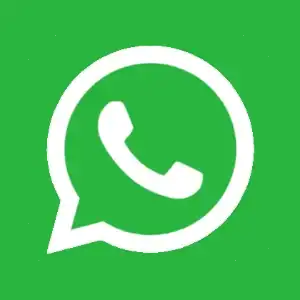Useful telephone numbers
| Emergencies | 999 |
|---|---|
| Non-emergency police | 101 (for crimes that don’t need an immediate response) |
| Non-emergency medical | 111 (for non-urgent medical advice) |
| Speaking clock | 123 |
| Operator | 100 (local); 155 (international) |
| Reverse charges | 155 |
| Directory enquiries | 118 118 or 118 500 (local); 118 505 or 118 866 (international) |
How to make international telephone calls from the UK
To call another country from the UK you have to add the following prefixes to the beginning of the number. If the telephone number begins with a zero then it’s usual practice to drop it (but this differs from country to country, so you might want to try both ways).
| Pre-fix | Pre-fix | ||
|---|---|---|---|
| Albania | 00 355 | Algeria | 00 213 |
| Argentina | 00 54 | Australia | 00 61 |
| Austria | 00 43 | Bahamas | 00 1 242 |
| Bangladesh | 00 880 | Barbados | 00 1 246 |
| Belarus | 00 375 | Belgium | 00 32 |
| Belize | 00 501 | Bermuda | 00 1 441 |
| Bolivia | 00 591 | Bosnia-Herze. | 00 387 |
| Brazil | 00 55 | Bulgaria | 00 359 |
| Canada | 00 1 | Chile | 00 56 |
| China | 00 86 | Columbia | 00 57 |
| Costa Rica | 00 506 | Croatia | 00 385 |
| Cuba | 00 53 | Cyprus | 00 357 |
| Czech Republic | 00 420 | Denmark | 00 45 |
| Dominican Rep. | 00 1 809 | Ecuador | 00 593 |
| Egypt | 00 20 | El Salvador | 00 503 |
| Estonia | 00 372 | Ethiopia | 00 251 |
| Fiji | 00 679 | Finland | 00 358 |
| France | 00 33 | Germany | 00 49 |
| Gibraltar | 00 350 | Greece | 00 30 |
| Guatemala | 00 502 | Haiti | 00 509 |
| Honduras | 00 504 | Hong Kong | 00 852 |
| Hungary | 00 36 | Iceland | 00 354 |
| India | 00 91 | Indonesia | 00 62 |
| Iran | 00 98 | Iraq | 00 964 |
| Ireland | 00 353 | Israel | 00 972 |
| Italy | 00 39 | Jamaica | 00 1 876 |
| Japan | 00 81 | Jordan | 00 962 |
| Kazakhstan | 00 7 | Kenya | 00 254 |
| Korea (North) | 00 850 | Korea (South) | 00 82 |
| Kuwait | 00 965 | Latvia | 00 371 |
| Lebanon | 00 961 | Libya | 00 218 |
| Luxembourg | 00 352 | Malaysia | 00 60 |
| Malta | 00 356 | Mexico | 00 52 |
| Mongolia | 00 976 | Morocco | 00 212 |
| Nepal | 00 977 | Netherlands | 00 31 |
| New Zealand | 00 64 | Nicaragua | 00 505 |
| Nigeria | 00 234 | Norway | 00 47 |
| Pakistan | 00 92 | Panama | 00 507 |
| Paraguay | 00 595 | Peru | 00 51 |
| Philippines | 00 63 | Poland | 00 48 |
| Portugal | 00 351 | Puerto Rico | 00 1 787 |
| Romania | 00 40 | Russia | 00 7 |
| Saudi Arabia | 00 966 | Serbia & Mont. | 00 381 |
| Singapore | 00 65 | Slovakia | 00 421 |
| Slovenia | 00 386 | South Africa | 00 27 |
| Spain | 00 34 | Sudan | 00 249 |
| Swaziland | 00 268 | Sweden | 00 46 |
| Switzerland | 00 41 | Syria | 00 963 |
| Taiwan | 00 886 | Thailand | 00 66 |
| Trin. & Tobago | 00 1 868 | Tunisia | 00 216 |
| Turkey | 00 90 | UAE | 00 971 |
| Ukraine | 00 380 | Uruguay | 00 598 |
| USA | 00 1 | Venezuela | 00 58 |
| Vietnam | 00 84 | Zimbabwe | 00 263 |
If somebody wants to call you from another country (whilst you are still in the UK), then they’ll need to start with the correct international dialling code – 00 from China, Europe, India, the Middle East, New Zealand and South America, 001 from Hong Kong, Korea and Thailand, 0011 from Australia, 010 from Japan, and 011 from the USA and Canada – followed by the UK’s own country code: 44. And remind them to drop any zeros at the beginning of the number.
How do you use a telephone box in London?
Using a red telephone box in London is very easy. Before you put any money in, dial the number. When you hear a beeping sound, insert your coins. The beeping sound tells you that the call has just been answered at the other end, so don’t dawdle as the person might hang up.
Be aware that some of the newer call boxes do it the other around: they ask you to put your money in first and then dial afterwards – there should be some instructions printed somewhere to help you out (or they might be an LCD display on the phone).
You might also be able to swipe your own credit card or debit card through an accompanying slot, but we advise against using your card in a phone box because it might have been tampered with.
If you hear a beeping sound midway through the call (called ‘the pips’) then your credit is about to run out so you should feed some more money into the slot.
The minimum charge is 60p for thirty minutes of talk time. If you use a bank card then the minimum charge is £1.20. You then have to pay an extra 10p for every fifteen minutes thereafter. Be aware that the price might be a higher for certain prefixes, like 087 number for example, which cost 10p every 12 seconds.
How do you buy stamps and post a letter?
There are two kinds of mail in the UK: 1st class and 2nd class. First class is supposed to arrive the next day if it’s posted before 5 PM, but that’s just for local letters (e.g. from London to London). If you want to send it to another part of the country then you need to post it before 1 PM. Second class letters take up to three days.
| Letter | Weight: Up to 100g Max size: 24cm x 16.5cm x 0.5cm 1st class: £1.25 2nd class: 75p |
|---|---|
| Large letter | Weight: Up to 750g Max size: 35.3cm x 25cm x 2.5cm 1st class: £1.95 to £3.20 2nd class: £1.55 to £2.60 |
| Small parcel | Weight: Up to 2kg Max size: 45cm x 35cm x 16cm 1st class: £3.69 2nd class: £2.99 |
| Medium parcel | Weight: Up to 20kg Max size: 61cm x 46cm x 46cm 1st class: £5.29 to £10.99 2nd class: £4.49 to £9.49 |
| International letter | Weight: Up to 100g Max size: 24cm x 16.5cm x 0.5cm Europe: £2.20 Rest of world: £2.20 |
| International large letter | Weight: Up to 750g Max size: 35.3cm x 25cm x 2.5cm Europe: £3.25 to £6.25 Rest of world: £4.20 to £11.10 |
| International parcel | Weight: Up to 2kg Max size: Height+width+depth less than 90cm, and no side longer than 60cm Europe: £5.15 to £11.70 Rest of world: £5.25 to £13.75 |
| Note: Prices are correct as of | |
Postage samps can be purchased from newsagents and supermarkets (look for a red Royal Mail sign in the window). They usually sell them in books of four or ten. If you want a single stamp then you’ll probably have to buy it from a post office.
Large letters and heavy letters are always more expensive. If you haven’t got the facility to weigh it yourself then take it to the nearest post office and ask them to tell you the price. They will ask you to put it on the scales by the counter.
International mail (previously known as ‘Airmail’) usually takes three days to reach Europe, and 4-6 days to reach the rest of the world.
How do you use Poste Restante in London?
Using Poste Restante allows you to receive a letter even if you don’t have an address in London. The sender will need to write your full name, ‘Poste Restante’, and the address of your nearest post office on the envelope, and you will be able to pick it up by showing a recognised photo ID (e.g. your passport or UK driving license).
The post office will only keep the letter for a maximum of two weeks, or one month if it’s sent from abroad.
Most travellers address their Poste Restante to the big branch by Trafalgar Square (24-28 William IV Street, London, WC2N 4DL – Open 8.30 AM to 6.30 PM Mon-Fri, 9 AM to 5.30 PM Sat), but you can actually send it to any branch you like.
There are more big branches in Regent Street (11 Regent Street, London, SW1Y 4LR – Open 8 AM to 6.30 PM Mon-Fri, 10 AM to 5.30 PM Sat, 12 noon to 4 PM Sun), Aldwych (95 Aldwych, London, WC2B 4JN – Open 9.30 AM to 5.30 PM Mon-Fri) and Holborn (181 High Holborn, London, WC1V 7RL – Open 9 AM to 6 PM Mon, 9.30 AM to 6 PM Tue-Fri).
You can find your nearest post office on the Royal Mail website: royalmail.com/services-near-you.
Are there any free Wi-Fi spots in London?
Free Wi-Fi spots can be found in the majority of London’s underground and overground stations – more than 97% of the TFL network – but only if you already have a mobile phone account with one of the big British mobile providers: BT, EE, O2, Three and Virgin. If you’re not already a customer of one of those providors then you’ll have to buy temporary access from virginmedia.com.
Another free Wi-Fi service in London is Sky’s ‘The Cloud’. You can sign-up at sky.com/wifi. Once you have access you should be able to use it inside the Square Mile, which runs roughly from Fleet Street to the Tower of London, plus hundreds of pubs and food shops like Caffe Nero, PizzaExpress, Pret a Manger, Wagamama and more. You’ll know when you’re ‘in the zone’ because The Cloud’s page will pop on your browser every time you try and surf the web.
Some of the most popular tourist attractions provide free Wi-Fi as well, like the British Library (bl.uk/help/wifi-guide).
And there’s always good old McDonalds. Lots of their central London branches offer free Wi-Fi if you don’t mind registering your details on their app first.
A word of warning for internet newbies: whilst public Wi-Fi is certainly very handy it is definitely not secure, and you should never enter sensitive information like bank details and email account passwords into your browser. Anybody who has the right kit and is using the same hotspot can theoretically snoop on all the information you send.
 Twitter
Twitter Facebook
Facebook Bluesky
Bluesky WhatsApp
WhatsApp Email
Email